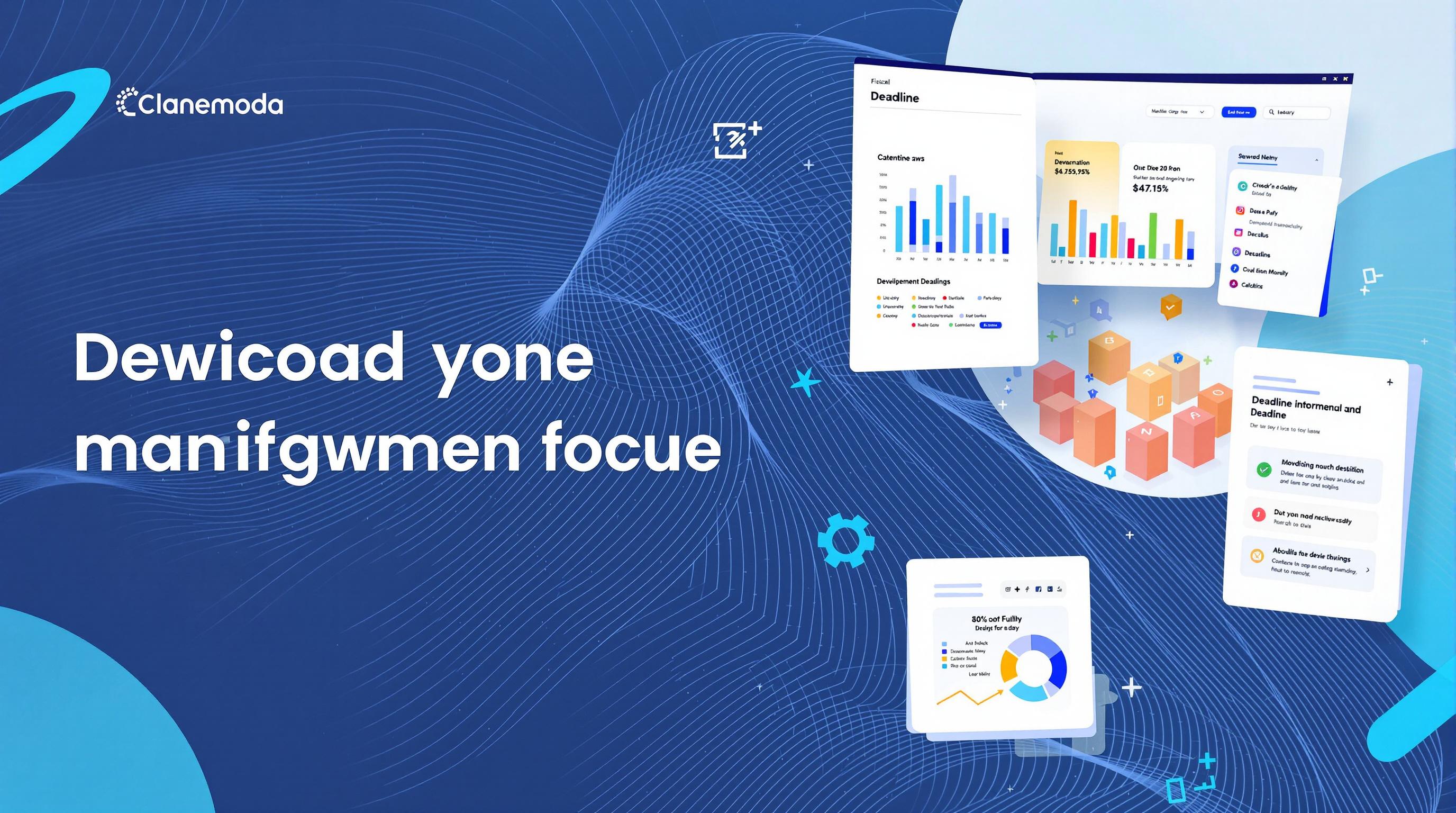Related Articles
- The Role of Quantum Encryption in Transforming Legacy Data Protection Practices for Businesses
- Top 6 AI-Powered Subscription Platforms Transforming Product Access and Affordability Since 2019
- Unseen Pitfalls: How Cognitive Overload in Finance Audits Undermines Checklist Effectiveness and Decision Quality
- The Silent Impact of Global Fiscal Shifts on Local Tax Date Practices No One’s Talking About
- How Cultural Narratives Shape Personal Budgeting: Unseen Influences Behind Financial Template Choices
- Top 6 Underrated Payment Tools Released Since 2019 Changing How Stores Handle Transactions
9 Overlooked Tax Deadline Strategies for Entrepreneurs to Safeguard Cash Flow and Enhance Year-Round Compliance
9 Overlooked Tax Deadline Strategies for Entrepreneurs to Safeguard Cash Flow and Enhance Year-Round Compliance
9 Overlooked Tax Deadline Strategies for Entrepreneurs to Safeguard Cash Flow and Enhance Year-Round Compliance
1. Prioritize Quarterly Estimated Tax Payments
Many entrepreneurs overlook the importance of timely quarterly estimated tax payments, which can lead to unexpected penalties and interest. These payments help spread the tax liability evenly throughout the year, avoiding a large lump sum at tax time. Consistently making estimated tax payments aids in maintaining healthy cash flow by predicting and managing tax expenses effectively.
Scheduling these payments ahead of deadlines — typically April, June, September, and January — is crucial. Utilizing accounting software with reminder features can prevent missed payments, ensuring compliance and reducing stress. Additionally, aligning your bookkeeping practices with these deadlines provides clearer insight into your taxable income versus actual cash availability.
IRS guidelines emphasize these payments to avoid underpayment penalties (IRS Publication 505). Entrepreneurs who adhere to this schedule protect their business from surprises and foster better financial health throughout the year.
2. Leverage Safe Harbor Rules to Avoid Penalties
The IRS offers safe harbor rules that can shield entrepreneurs from underpayment penalties if certain conditions are met. By paying either 90% of the current year’s tax liability or 100% of the previous year’s tax, taxpayers can secure protection against penalties, even if their income fluctuates unexpectedly.
This strategy allows entrepreneurs to plan conservatively in uncertain markets, providing peace of mind while maintaining adequate payment balance. Understanding the thresholds and adhering to them helps ensure compliance without overburdening cash flow.
Consulting the IRS safe harbor provisions can be beneficial for strategic planning. For example, individuals with adjusted gross income over $150,000 are subject to a 110% payment threshold, a detail often missed but critical for proper tax planning.
3. Implement Robust Record-Keeping Systems Year-Round
Effective record-keeping throughout the year prevents last-minute scrambles to gather documentation at tax time. Entrepreneurs should organize receipts, invoices, and expense records systematically to support deductions and credits, minimizing audit risks.
Digital tools like cloud-based accounting platforms and scanned document repositories enhance accessibility and accuracy. Real-time recording reduces errors and helps monitor deductible expenses more efficiently.
By maintaining comprehensive records, entrepreneurs not only streamline the tax filing process but can also make proactive financial decisions aligned with their tax obligations, ultimately safeguarding cash flow.
4. Optimize Tax Withholdings and Payroll Schedules
Entrepreneurs often neglect adjusting payroll tax withholdings in response to changes in income or tax law updates. Misaligned withholdings can result in unexpected tax bills or cash shortages. Periodic reviews ensure appropriate amounts are withheld to balance tax liability and cash retention.
Additionally, scheduling payroll disbursements strategically within the month can provide cash flow flexibility. Aligning payroll cycles with incoming revenue cycles ensures funds are available when payroll taxes and related obligations are due.
Consult your payroll provider or use IRS withholding calculators (IRS Tax Withholding Estimator) to make informed adjustments. Proper planning here helps entrepreneurs avoid excess withholding, freeing up capital for reinvestment.
5. Take Advantage of Tax Credits and Incentives Early
Many tax credits and incentives are time-sensitive, requiring entrepreneurs to act before certain deadlines to claim benefits. Examples include credits for research and development, energy efficiency, or hiring targeted worker groups.
Proactively identifying eligibility and applying promptly can reduce tax liabilities significantly and improve cash flow. Entrepreneurs should review federal, state, and local incentives regularly as these programs often evolve.
Engaging a tax professional periodically can uncover lesser-known credits applicable to the business, ensuring maximum utilization. Early action on these incentives transforms tax obligations into strategic advantages.
6. Plan for Self-Employment Tax Obligations
Self-employed entrepreneurs face additional self-employment tax responsibilities that can be overlooked until filing deadlines approach. These taxes cover Social Security and Medicare contributions, which add substantially to total tax liabilities.
By estimating these taxes quarterly and setting aside funds, entrepreneurs avoid liquidity challenges at year-end. Using IRS Schedule SE as a reference helps with accurate calculations.
Failure to plan can result in large unexpected payments, disrupting cash flow. A disciplined approach reduces surprises, ensuring funds flow steadily to meet both tax and operational expenses.
7. Utilize Entity Structure to Maximize Tax Efficiency
The choice of business entity (LLC, S-Corp, C-Corp, etc.) affects tax deadlines, payment obligations, and potential deductions. Entrepreneurs sometimes miss opportunities by not revisiting their entity structure regularly as the business evolves.
Optimizing the entity structure to align with business goals can lower tax burdens and provide more favorable payment schedules. For instance, S-Corp election may reduce self-employment taxes while affecting filing deadlines.
Consult with tax advisors to ensure your entity choice supports both compliance and cash management strategies, maximizing financial benefit while meeting all requirements timely.
8. Set Aside a Dedicated Tax Reserve Account
Creating a separate account designated for tax payments ensures funds are always available when tax deadlines arrive. This reduces the temptation to use tax savings for operational expenses, which can lead to cash shortfalls.
Entrepreneurs should estimate quarterly tax liabilities and transfer amounts promptly into this reserve, maintaining discipline regardless of immediate cash needs.
This simple yet effective strategy provides assurance and financial stability, helping to smooth out cash flow fluctuations and reinforce compliance without sacrificing operational continuity.
9. Align Tax Planning with Business Growth Milestones
Tax strategies should evolve alongside business growth events such as increased revenue, new funding rounds, or expansion into new markets. These changes often trigger different tax implications and deadlines.
Regularly revisiting tax plans in response to milestones allows entrepreneurs to adapt payment schedules, update estimated taxes, and optimize deductions accordingly.
Proactive tax planning integrated with business development reduces compliance risks and ensures cash flow management aligns with new financial realities, maintaining a healthy and scalable operation.
Bonus Strategy: Engage Professional Tax Advisors Proactively
While many entrepreneurs seek tax professionals only during filing seasons, ongoing engagement can identify overlooked deadlines, credits, and payment strategies. Expert advice tailored to your business ensures compliance and financial efficiency year-round.
Professionals can help navigate complex tax codes, adjust strategies dynamically, and provide early warnings about regulatory changes affecting deadlines and liabilities.
Investing in professional guidance is an invaluable tool to safeguard cash flow, reduce risk, and enhance overall fiscal health, creating a resilient entrepreneurial foundation.



